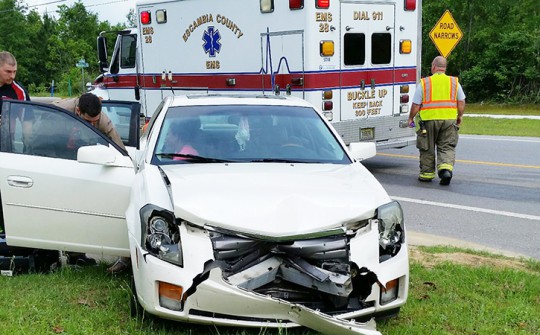No-Fault Insurance Repeal Gets Senate Backing
January 12, 2018
An effort to eliminate the state’s “no-fault” auto insurance system got rolling Wednesday in the Senate, amid concerns the change would not significantly lower rates.
Also, questions continue over the fate of the Senate proposal (SB 150) because of medical coverage requirements that are not included in a similar measure (HB 19), which is teed up for a vote by the full House.
The Senate Banking and Insurance Committee on Wednesday voted 10-1 to support the bill by Sen. Tom Lee, R-Thonotosassa. It would repeal the no-fault law, which requires motorists to carry $10,000 in personal-injury protection, or PIP, coverage to help pay medical expenses after accidents.
“I’m trying to make sure we don’t raise premiums on Floridians, but at the same token that we protect as many options for consumers to get medical care in the event of an accident,” Lee said after the meeting. “It’s a balancing act.”
The proposal must still go before two more committees before reaching the Senate floor.
Since a 2012 effort to reform the no-fault system — championed by Gov. Rick Scott and then-state Chief Financial Officer Jeff Atwater — efforts have increased in Tallahassee to replace it with a tort-based system.
The 2012 law, in part, required people involved in crashes to seek treatment within 14 days, put a $2,500 cap on coverage for non-emergency conditions, eliminated massage therapists and acupuncturists from getting paid for medical coverage and set new requirements for chiropractic visits.
The 2012 changes were considered a last-ditch effort to maintain the no-fault system after rates increased because of fraudulent claims.
Lee’s measure would require motorists to carry $5,000 in what is known as medical payments coverage, or MedPay, and minimum amounts of bodily-injury coverage that would increase over time.
Sen. Rene Garcia, R-Hialeah, called his vote for the measure a “soft yes,” saying he will continue to seek lower projected premium increases.
“Insurance rates will go up for those that have just PIP policies,” Garcia said. “So, that means that a lot of us in the minority communities, for a lot of us that live in South Florida, some of those rates for those that have insurance just PIP-only policies, their rates will go up.”
Under Lee’s MedPay rules, people would be required to seek medical attention within 14 days of injuries occurring.
Through an amendment, Garcia was able to attach language to the bill that would allow MedPay to also cover chiropractic and dental costs.
Mark Delegal, a lobbyist representing State Farm, which is opposed to the Senate proposal, called Lee’s amended measure “PIP version 2.0” and warned that the system will remain “costly and inefficient.”
“You’re throwing that right back on it, with a broad spectrum of providers, and without knowing the costs of that up front,” Delegal said. “It’s going to be unaffordable to a lot of people.”
Lee’s proposal is estimated to initially raise rates about $4 a year, as the savings from the elimination of no-fault would be offset by increases in premiums for bodily-injury liability coverage and uninsured-motorist coverage.
“You could lower insurance premiums, if that was our solitary goal, by gutting insurance coverage and having people drive around with almost no coverage,” Lee said. “The question is what is the most efficient system.”
The House measure sponsored by Rep. Erin Grall, R-Vero Beach, faces opposition from some insurers, business groups and medical providers. It has been projected to save motorists on average about $80 a year.
Grall’s proposal, which was backed by the House Commerce Committee in an 18-7 vote last month, would eliminate the system’s limits on lawsuits. Drivers at fault in accidents would be fully liable for damages, with the minimum bodily-injury coverage under Grall’s proposal being $25,000 for damages for injury or death of one person and $50,000 for injury or death of two or more people.
Lee’s proposal, starting Jan. 1, 2019, would set a minimum of $20,000 for bodily injury protection that includes coverage for the injury or death of one person and $40,000 for injury or death of two or more people.
Individual premiums would be expected to increase as the minimum coverage would grow to $25,000 and $50,000 two years later and to $30,000 and $60,000 on Jan. 1, 2023.
by Jim Turner, The News Service of Florida
NorthEscambia.com file photo, click to enlarge.




Comments